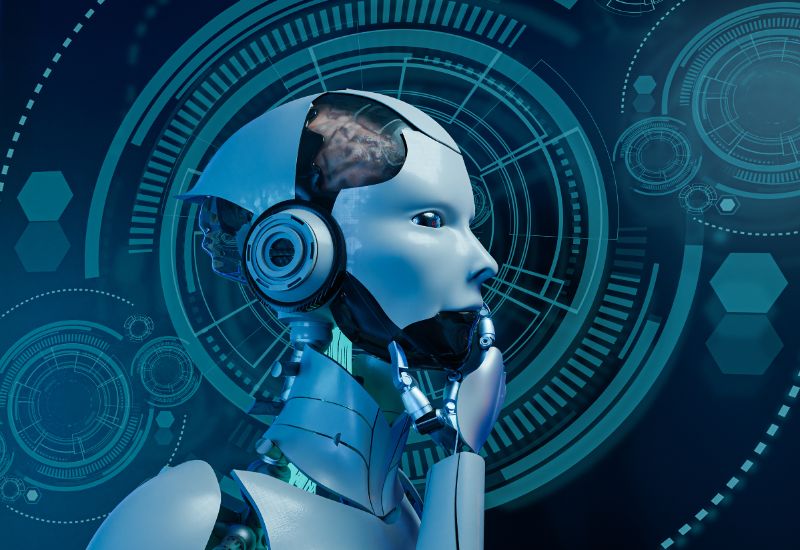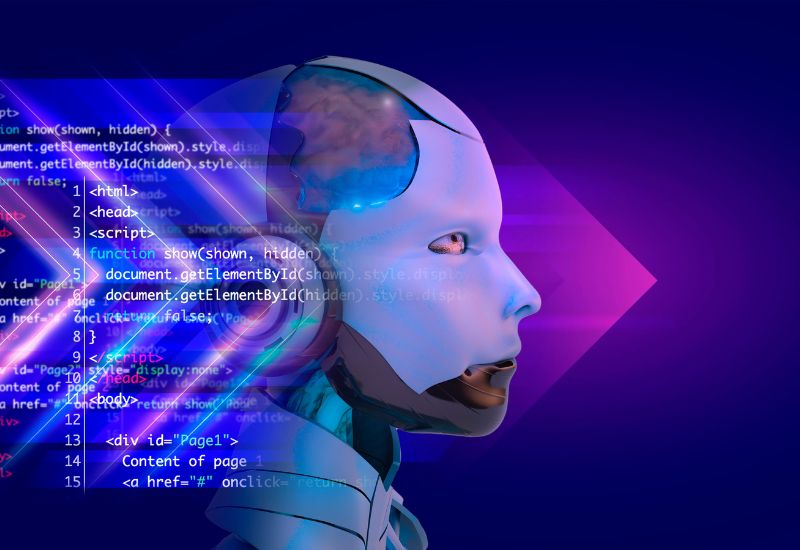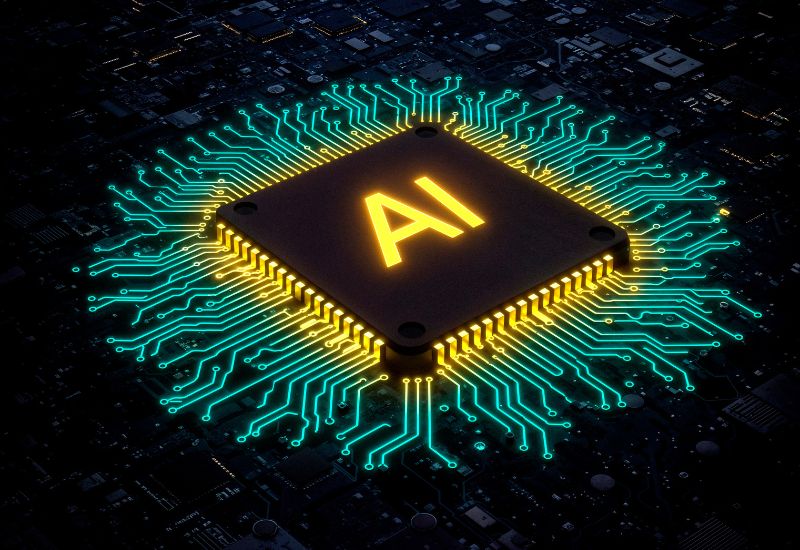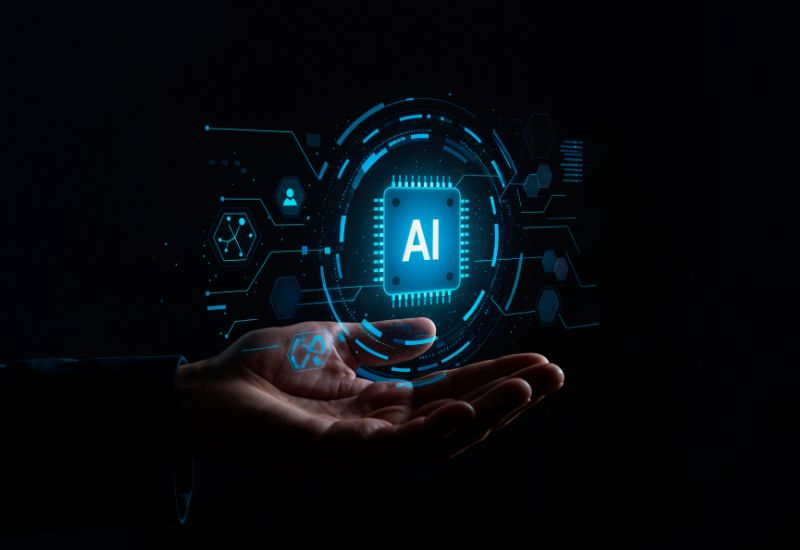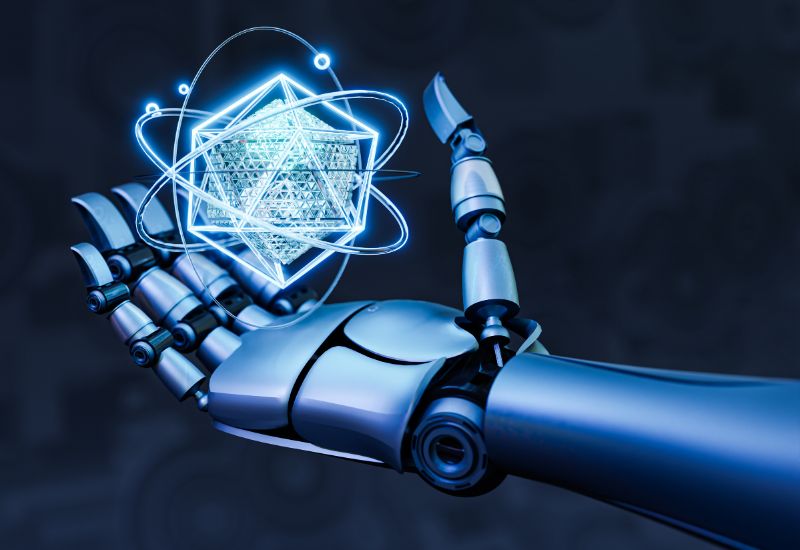What are Generative AI Models?
Generative AI models use machine learning to create fresh data outputs that mimic the patterns found in their training datasets. Instead of focusing on classification or prediction tasks like discriminative models, generative models learn the underlying patterns and structures within a dataset to create similar outputs. These outputs can range from text and images to audio, video, and even code.
These models power many of today’s AI-driven applications, such as chatbots, image generators, and content recommendation systems. Popular examples include large language models (LLMs) like GPT, which generate human-like text, and generative adversarial networks (GANs), which produce realistic images. As generative AI continues to evolve, it plays a growing role in industries like healthcare, entertainment, education, and software development.
How Do Generative AI Models Work (Discriminative Modeling and Generative Modeling)
These AI-driven systems work by learning the underlying probability distribution, a foundational principle in generative AI in data analytics, which allows them to create new data samples that resemble the original input. This process is based on generative modeling, where the goal is to model how the data is generated so that the model can simulate it. For example, a generative model trained on thousands of sentences learns the likelihood of word sequences, enabling it to generate new, coherent text. These advanced systems, like those used in AI & ML solutions, often rely on deep learning architectures such as variational autoencoders, transformer-based models, or generative adversarial networks, depending on the type of data and desired output.
To understand generative modeling, it helps to compare it with discriminative modeling. Discriminative models focus on learning the boundary between classes, for instance, determining whether an email is spam or not. They model the relationship between input data and labels. In contrast, generative models go deeper: they learn how the data itself is structured and can generate new instances without needing labels. This fundamental difference enables generative AI models to create realistic and diverse outputs in fields like natural language processing, image synthesis, and more.
Types of Generative AI Models
Generative AI has evolved through several model architectures, each designed to learn and recreate complex data distributions. These models differ in how they generate new data, but they all serve the core purpose of creating content that resembles real-world input. Here are some of the most commonly used types of generative AI models in today’s landscape
1. Large Language Models (LLMs):
Models like GPT are trained on large-scale text datasets to learn and produce language that closely mimics human expression. They use transformer architectures to capture long-range dependencies in text and are widely used in chatbots, summarization, and content generation.
How They Work: They use transformer architecture and autoregressive methods to process input sequences and generate meaningful responses.
Example: ChatGPT is a popular LLM that can write essays, answer questions, or create content by analyzing and continuing user prompts.
2. Variational Autoencoders (VAEs):
VAEs are probabilistic models that learn a compressed representation of data and then decode it to reconstruct new samples. They’re commonly used in image and speech generation, offering stable training and smooth latent space representations.
How They Work: A Variational Autoencoder (VAE) is made up of two main components: an encoder and a decoder. The encoder learns to represent data as a distribution in latent space, and the decoder samples from this distribution to generate new data.
Example: A VAE trained on face images can generate entirely new, realistic-looking human faces that retain the style of the original dataset.
3. Generative Adversarial Networks (GANs):
Generative Adversarial Networks (GANs) feature a generator and a discriminator, which are trained in opposition to one another. The generator creates data, while the discriminator tries to distinguish between real and fake samples. This setup produces highly realistic outputs, especially in image synthesis.
How They Work: The generator tries to create fake data, while the discriminator tries to detect whether the data is real or generated. As they train, both improve, and the generator learns to produce outputs that the discriminator can no longer distinguish from real ones.
Example: StyleGAN is a GAN-based model used to generate photorealistic human faces, fashion designs, or artwork that appear authentic but are completely synthetic.
4. Autoregressive Models:
These models generate data step by step, predicting each value based on previously generated ones. They are popular in natural language processing tasks and are known for producing coherent and sequential outputs.
How They Work: They use a chain-like prediction mechanism. For example, in text generation, the model predicts the next word based on all previous words in the sentence.
Example: GPT (Generative Pre-trained Transformer) is an autoregressive model that predicts the next word or token in a sequence, enabling it to write coherent paragraphs of text.
5. Flow-Based Models:
These models use invertible transformations to model data distributions directly and allow exact likelihood estimation. These models excel at producing high-quality outputs while still allowing for probability estimation.
How They Work: These models use a series of reversible transformations to map data into a simpler distribution (like a Gaussian) and then back again. The transformations are designed so that the exact probability of each data point can be calculated.
Example: Glow by OpenAI is a flow-based model capable of generating high-resolution images and performing image editing through latent space manipulations.
6. Transformer-Based Models:
Modern AI & ML applications frequently rely on transformer-based models to support generative capabilities across industries, especially in language and vision. With self-attention mechanisms, they can model complex relationships across sequences, making them highly scalable and adaptable across domains.
How They Work: Instead of processing input data step by step, transformers look at all elements of a sequence at once, using self-attention to weigh the importance of different parts. This allows them to capture complex patterns more effectively.
Example: DALL·E is a transformer-based model that generates images from text prompts by learning connections between visual and linguistic features.
Each model type contributes uniquely to the growing field of generative AI, supporting a wide range of applications from automated text generation to realistic image creation.
Read our detailed articles on generative AI.
Applications of Generative AI Models
Businesses are leveraging generative AI services to transform how content is created, products are designed, and decisions are made. By learning from large datasets and generating new, high-quality outputs, these models are now powering a wide range of applications across industries. Below are some of the most impactful applications of generative AI models:
1. Text Generation and Content Creation
Generative AI models, especially large language models (LLMs), are used to write articles, blogs, emails, product descriptions, and more. They help automate content creation for marketing, publishing, and communication.
Example: Tools like ChatGPT and Jasper AI assist writers by generating ideas, outlines, or full-length drafts in seconds.
2. Image and Art Generation
Generative adversarial networks (GANs) and transformer-based models can produce high-resolution images, artwork, and visual designs based on user prompts or training data.
Example: DALL·E and Midjourney allow users to create digital illustrations and concept art from simple text input, often used in advertising, gaming, and design.
3. Synthetic Data Generation
Generative models create artificial datasets that mimic real-world data, which are useful for training machine learning models while protecting privacy or supplementing scarce data.
Example: Healthcare institutions use synthetic medical data to train AI algorithms for diagnostics without exposing real patient records.
4. Drug Discovery and Molecular Design
VAEs and GANs are applied in biotechnology to generate new molecular structures with specific properties, accelerating the drug discovery process.
Example: AI-generated molecules are used in early-stage pharmaceutical research to identify candidates for treatment faster and more cost-effectively.
5. Video and Audio Synthesis
Generative models can synthesize human voices, sound effects, and even full videos. These models are used in filmmaking, gaming, and virtual assistant technologies.
Example: Descript’s Overdub allows users to clone voices for audio editing, while video generation tools can produce lifelike avatars or synthetic news anchors.
6. Personalized Recommendations and Experiences
Generative AI is used to customize user experiences in platforms like e-commerce, entertainment, and education by generating personalized content or product combinations.
Example: AI-driven recommendation engines generate customized product bundles or streaming playlists based on user behavior and preferences.
7. Code Generation and Software Development
These models, built on autoregressive and transformer architectures, can translate natural language prompts into code, complete functions, and even perform debugging.
Example: GitHub Copilot uses a generative model to assist developers by suggesting code in real-time as they type.
8. Data Augmentation and Simulation
A key advantage of generative AI in data analytics is the ability to enrich datasets with synthetic variations for training more robust models.
Example: In self-driving car simulations, generative models create diverse driving scenarios to test vehicle responses safely and efficiently.
From automating repetitive tasks to pushing the boundaries of creativity and innovation, generative AI models are reshaping industries by making machines capable of imagination and invention.
If you're curious about how these models transform insights in the analytics space, check out Generative AI in Data Analytics.
Benefits and Challenges of Generative AI Models
Generative AI models are powerful tools that bring transformative capabilities across industries, from content creation and design to science and automation. As with most technologies, they offer benefits but also have certain drawbacks. Understanding these helps organizations make informed decisions when adopting or deploying generative AI systems.
Benefits of Generative AI Models
- 1. Content Automation at Scale
Generative models can produce high-quality text, images, audio, or code rapidly, reducing manual effort and speeding up creative workflows.
- 2. Innovation and Prototyping
These models enable rapid prototyping of ideas, from architectural designs to product mockups, by generating variations instantly.
- 3. Enhanced Personalization
Generative AI can create personalized content, such as marketing copy or product recommendations, tailored to individual user behavior and preferences.
- 4. Data Augmentation and Simulation
In fields like healthcare, automotive, and robotics, generative models help simulate real-world conditions and create synthetic data to train AI models more effectively.
- 5. Cost Efficiency
By automating repetitive or creative tasks, businesses save on time and human resources while maintaining productivity and scale.
Challenges of Generative AI Models
- 1. Data Dependency
Generative models require large, high-quality datasets to learn effectively. When data is biased or lacking, the outputs can be inaccurate or deceptive.
- 2. Lack of Control and Accuracy
Generated content can be unpredictable, especially in text or image generation. Ensuring factual accuracy and control over outputs is still a major hurdle.
- 3. Ethical and Misuse Risks
Deepfakes, fake news, and AI-generated misinformation are significant concerns. Misuse of generative models can lead to reputational, legal, or social harm.
- 4. Computational Cost
Training and running these models, especially large language models, requires substantial computing power, making them expensive to build and deploy.
- 5. Intellectual Property Concerns
Since generative models are often trained on publicly available data, questions around copyright and ownership of generated content remain unresolved.
Generative AI opens up immense opportunities, but it must be applied with ethical care and responsibility. Balancing its benefits with careful attention to its challenges is key to unlocking long-term value.
Generative AI Models Examples
Generative AI has led to the development of powerful models that are already transforming industries like content creation, healthcare, design, and software development. Below are some well-known and widely used generative AI models, categorized by type and application:
1. GPT (Generative Pre-trained Transformer)
Type: Large Language Model (LLM)
Use Case: Text generation, summarization, code completion, question answering
Example: ChatGPT by OpenAI is based on the GPT architecture and is used for writing emails, creating content, coding help, and conversational AI.
2. DALL·E
Type: Transformer-based model
Use Case: Image generation from text prompts
Example: DALL·E 3 creates highly detailed images or illustrations from textual descriptions and is widely used in advertising, design, and marketing.
3. StyleGAN
Type: Generative Adversarial Network (GAN)
Use Case: High-resolution image synthesis
Example: This Person Does Not Exist is powered by StyleGAN and generates photorealistic images of people who don’t exist.
4. VQ-VAE (Vector Quantized Variational Autoencoder)
Type: VAE-based model
Use Case: Image and audio synthesis
Example: Used in generating speech and music by compressing high-dimensional data into discrete latent spaces for creative control and reconstruction.
5. Glow
Type: Flow-based model
Use Case: Image generation and manipulation with exact probability modeling
Example: Allows smooth interpolations and editing of generated images, offering fine-grained control over the visual output.
6. GitHub Copilot
Type: Autoregressive LLM (based on OpenAI Codex)
Use Case: AI-assisted coding
Example: Helps developers by suggesting code in real-time as they write, increasing productivity and reducing manual errors.
7. Runway Gen-2
Type: Multi-modal generative model
Use Case: Text-to-video generation
Example: Allows creators to generate short video clips from text prompts, transforming the future of filmmaking and animation.
These generative AI models showcase the flexibility and power of different model types, from generating natural language and realistic images to aiding software development and visual storytelling.
Conclusions
Generative AI is transforming the way we produce and interact with content in our daily lives. These models can produce text, images, videos, and more by learning from examples. They are already helping in areas like writing, design, healthcare, and education. As the technology grows, it's important to use it carefully and responsibly to get the best results.

